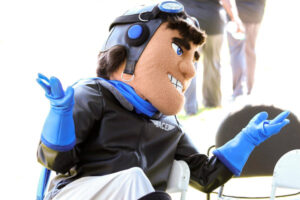
Mascot Prices: How Much Does a Mascot Cost?
Many factors can influence the price of a custom mascot costume, including differing levels of customization, customer support, quality of materials, construction methods, and mascot fit and functionality.
Racing mascots have been a staple part of baseball for several decades. The Milwaukee Brewers were the first Major League Baseball (MLB) team to add racing mascots to their lineup of between-inning entertainment over 30 years ago. Since then, multiple baseball teams from leagues all over the nation have adopted the concept with their very own set of racing mascots. Some of ones we’ve produced include:
These racing mascots may all look different, but they are all built to run. Running in a mascot costume is no small feat. Mascots typically require a mascot performer to be in decent athletic shape, especially if a mascot is going to be participating in any sort of physical activity. Performing a full-blown sprint in a mascot costume is particularly taxing on the body for the following reasons:
In theory, running from the 3rd base line to the 1st base line is rather simple. But with all of these factors in play, it can be quite the challenge for even the most seasoned athlete.
We here at Olympus Mascots have been making racing mascots for decades, and it all started with a request from our local Milwaukee Brewers in the mid-90s. At the time the Brewers had been running a virtual version of the Famous Racing Sausages on the scoreboard and wanted to bring that race onto the field. It was quite the challenge turning this mascot dream into reality, but after a whole lot of engineering and some elbow grease… we made it happen.
Typically, the honor of suiting up to race as a Famous Racing Sausage is awarded to those on the Brewer’s staff. Oftentimes the job finds its way to the interns specifically. However, on occasion the Brewers will open the opportunity to randomly selected season ticket holders. Luckily for us, Olympus Mascots has been a season ticket holder for over two decades. In the Spring of 2024, we received an email from the Brewers wondering if we had any employees that would want to suit up and race in one of their Famous Racing Sausages. After a bit of thought, we immediately volunteered one of our unsuspecting marketing interns.
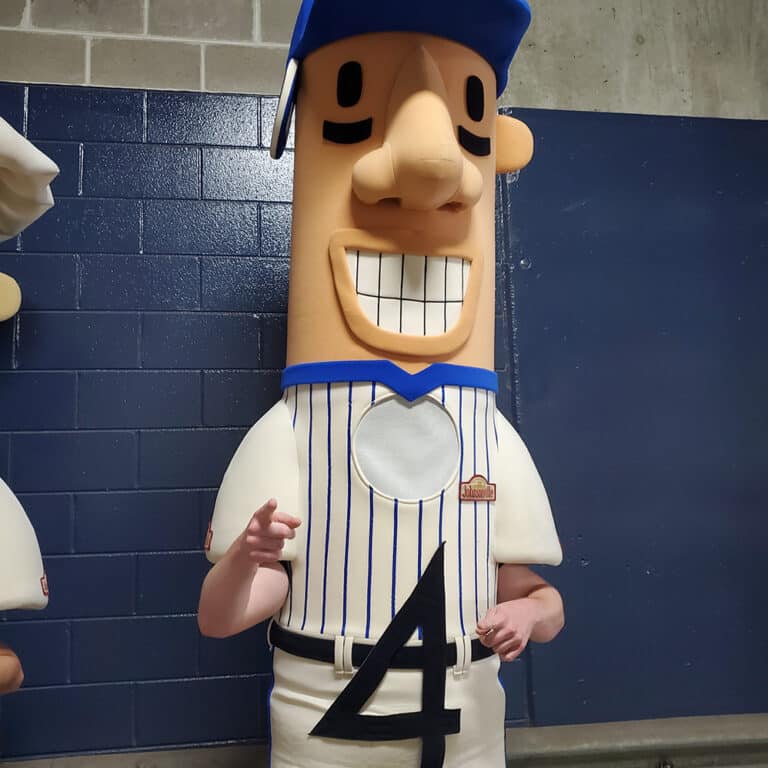
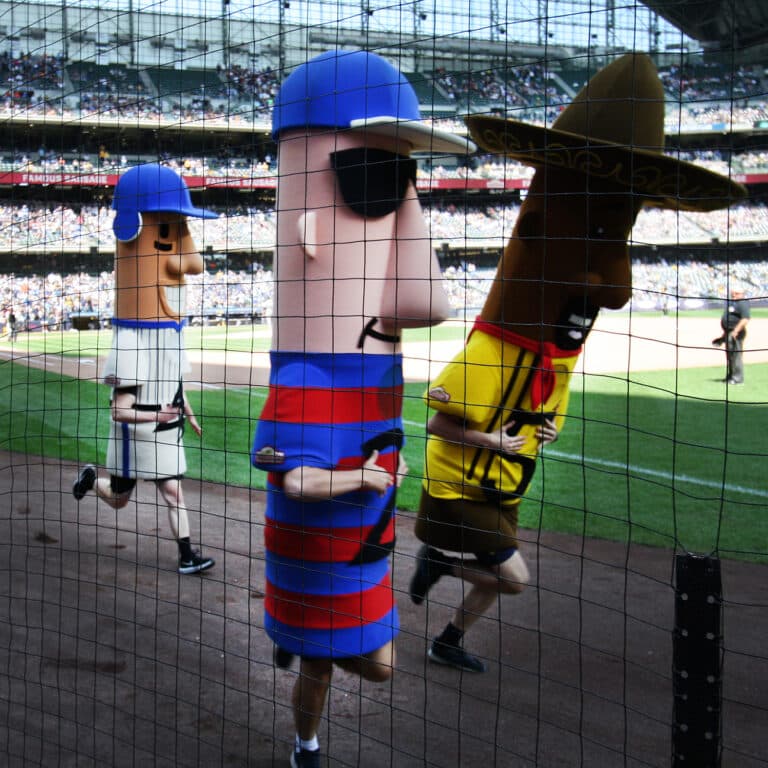
If you’ve ever seen the sausages in person, you’ll know that they are quite large. Each one stands between 8 and 9 feet tall, depending on the height of the performer in the costume. That’s a lot of material on your shoulders and requires a lot of carefully designed interior rigging to make it stable. If one wants to suit up in a Famous Racing Sausage, they need to be able to handle all that. Even if you find yourself in a racing mascot costume that is not one of the Famous Racing Sausages, you are likely to be in a similar situation. As most racing mascots are built in a similar manor.
For our intern to have a chance at first place, he’d need to start his own version of spring training. Our intern was already moderately active and had been in a mascot suit before. However, we’d still need to work on his strength, balance, and speed in order to pull this off. Unfortunately for us though, we’re mascot makers, not personal trainers.
Thankfully, Google came to our rescue, and we were able to piece together a program that would put him in the best possible position to leave his competitors in the dust. Here is what we did to prepare him to be a mascot racer.
Before you do any workout, you NEED to stretch. We recommend not only doing the standard stretching where you touch your toes and hold your arm behind your head, we also recommend spending time doing dynamic stretches. Leg swings, arm circles, high knees, and butt kicks are just a few of the great way you can get your tendons ready to go. Once you’re finished with your dynamic stretches, consider going for a light jog for 5-10 minutes to get your heart rate up and your muscles warm.
Remember, don’t just stretch for your workouts, stretch a couple minutes before the mascot race too. You don’t want to be on the jumbotron and pull a hamstring mid-race!
Most mascots, racing or otherwise, use shoulder pads to support the weight of the mascot head. Even with padding, your shoulders and upper back will need to be sturdy. The best way to build these muscle groups up is with strength resistance training. We’re not looking to turn you into a bodybuilder, but we are building up your skeletal support muscles.
Variations of deadlift, shrug, and overhead press movements are a great way to make wearing a mascot harness less of a burden. There is no need to get heavy with these lifts, you’re just trying to get your muscles loose and use to moving around extra weight. It will take time before you see or feel results. So if you can, try to work these movements into your workout routine a couple of weeks before race day.
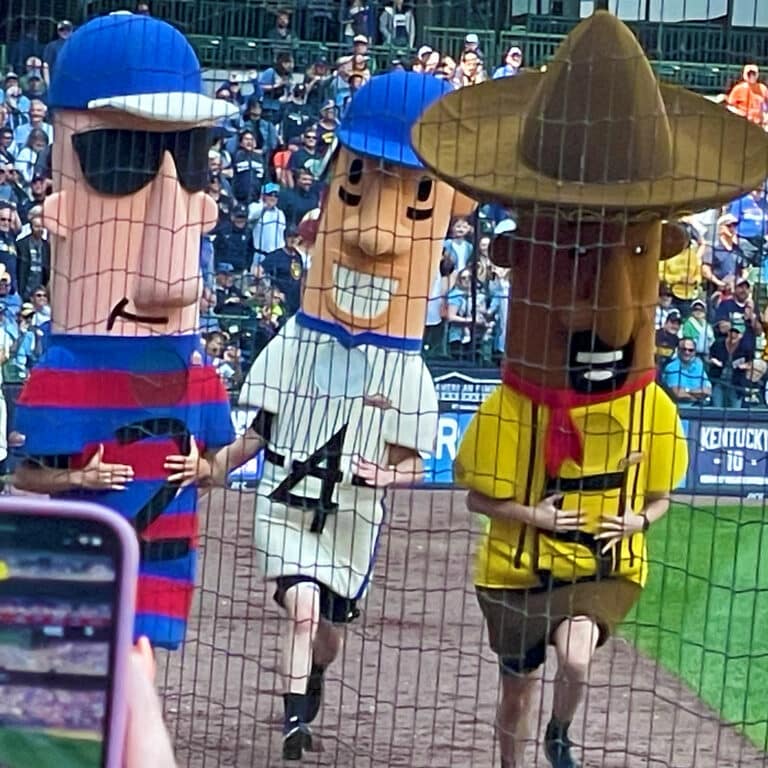
Like we mentioned earlier, a mascot is top heavy, and a racing mascot even more so. Being able to balance that weight while on the move is the most important factor in being fast in a racing mascot. In the case of the Famous Racing Sausages, the management team recommended that our intern use his arms to hold the front of costume. Rather than have his arms pump back and forth like most people do when sprinting normally. Whether or not this is an effective strategy for you will depend on your mascot costume. With the Famous Racing Sausages it definitely did help, especially when it came to rounding home plate.
So how do you train for this balancing act while not having a racing mascot costume at your disposal?
There are two main movements we recommend:
Double-Arm Overhead Farmer’s Carry
Lunge with an Overhead Hold
Mascot races are quick, and they are about speed and not endurance. The Famous Racing Sausages run for a distance of about 150 yards, which is a football field and a half. That may seem like a long distance, but most runners complete it within 20 to 30 seconds. As a mascot racer, you’ll probably be expected to race an equivalent distance.
150 yards is a short enough distance for most people to sprint the entire time. So your preparation should involve a lot of sprint drills and form work. When doing your sprint drills, don’t start out giving 100% effort, as we’re looking to slowly build our way to that point to lessen the chance of injury. Instead, start your first few practice sprints at 60% -75% effort. Save your maximum amount of effort for the last 2 or 3 sprints you’ll be doing for the day.
As for distance and rest time, these will vary depending on what you feel most comfortable with. Consider your age and current physical fitness before committing to a defined workout plan. Our marketing intern preferred to sprint anywhere from 40-70 yards for his training, but had rest times of around 2-3 minutes. He’d usually only do around 6 sprints total, as anything past that point became more of an endurance workout.
So, with all these training tips in mind, let’s see how our intern did. He was the Hot Dog in this race, which is the one with the white baseball jersey on, blue hat, and toothy smile.
Well… 3rd Place. Not the greatest finish, but not the “wurst” either. In his defense, 3 of the other sausages were Brewers employees that had run the race at least 20 times before. That may be just an excuse, but he thinks it’s worth mentioning! Despite not claiming first place, our intern showed incredible effort and truly embodied the spirit of mascot racing. From balancing that enormous Hot Dog head to sprinting across the field with seasoned pros, it was a memorable experience that highlighted the challenge and excitement of these races. Plus, the crowd loved every second of it, and that’s what really counts.
In conclusion, mascot racing may look like all fun and games from the stands, but it’s a physically demanding task requiring strength, balance, and speed. The training that goes into preparing for these races is no joke, and our intern’s experience proves it. Whether you’re a baseball fan or just curious about the world of mascots, racing these oversized characters adds a unique twist to America’s pastime. And while finishing first is great, the joy of entertaining fans and having fun on the field is what truly makes mascot racing a winner!
Need a racing mascot for your organization? We can help you out!
Please click here or fill out the form below to speak with one of our mascot experts!

Mascot Prices: How Much Does a Mascot Cost?
Many factors can influence the price of a custom mascot costume, including differing levels of customization, customer support, quality of materials, construction methods, and mascot fit and functionality.
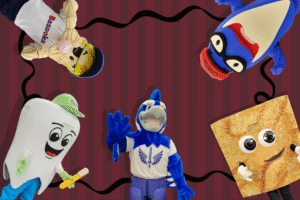
Check out Olympus Mascots Wrapped for 2025, where we’re highlighting the top mascots we created this year. From sports teams to iconic brand names, these custom mascot costumes brought unforgettable characters to life. Take a look back at the designs, collaborations, and creativity that defined our year.
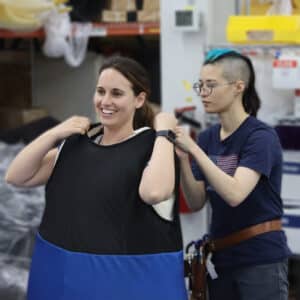
Where to Find a Mascot Performer
Looking to hire a mascot performer to perform inside your mascot costume? We’ve compiled a list of places to find quality mascot talent for all budget, frequency, and performance levels!